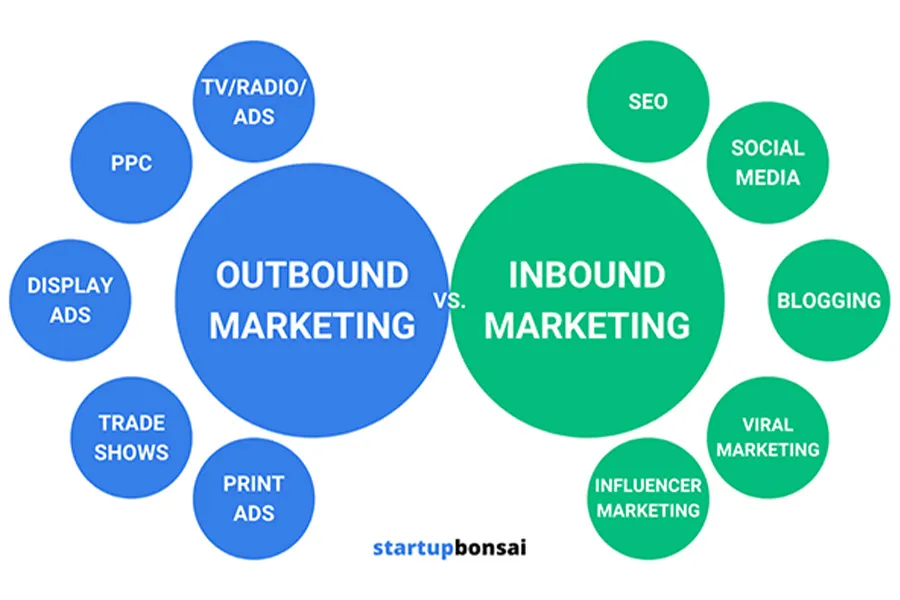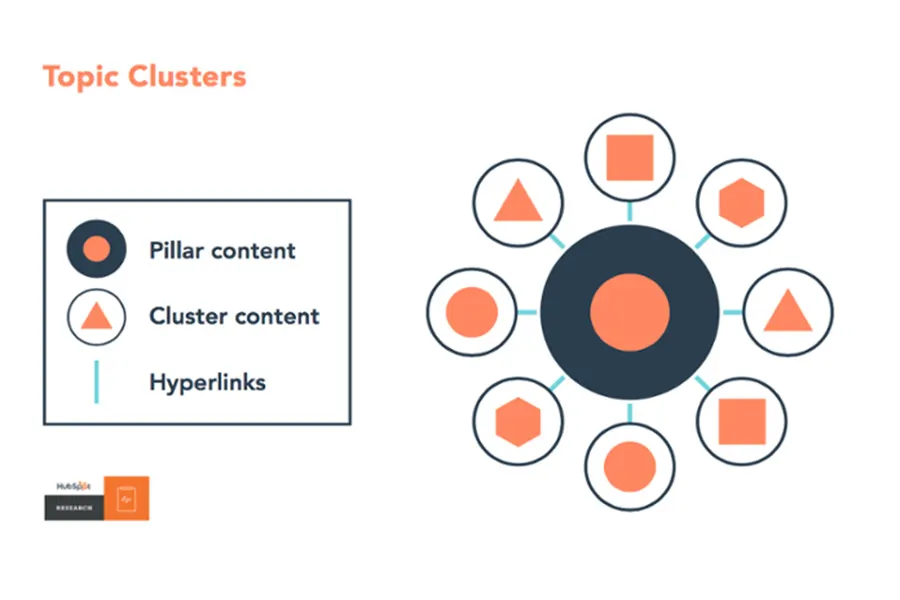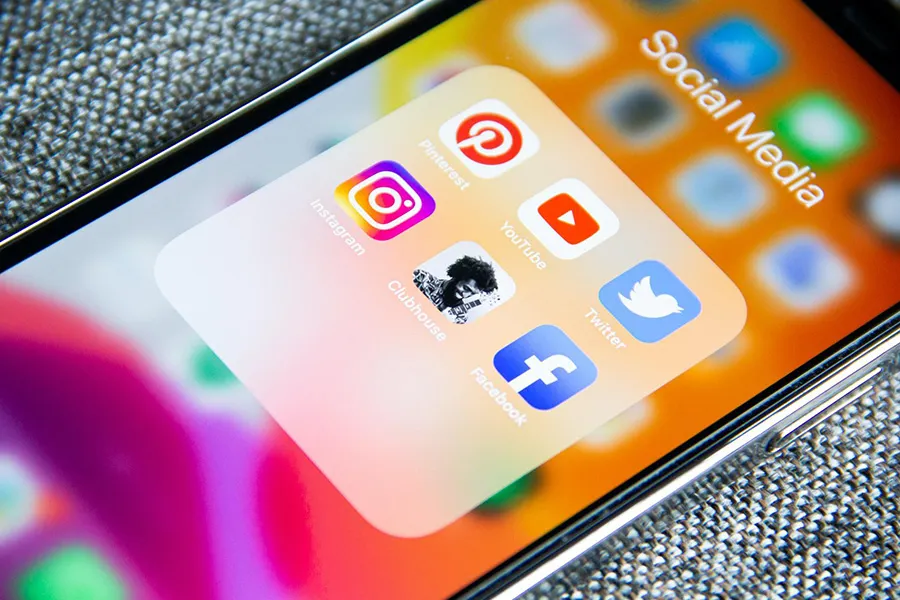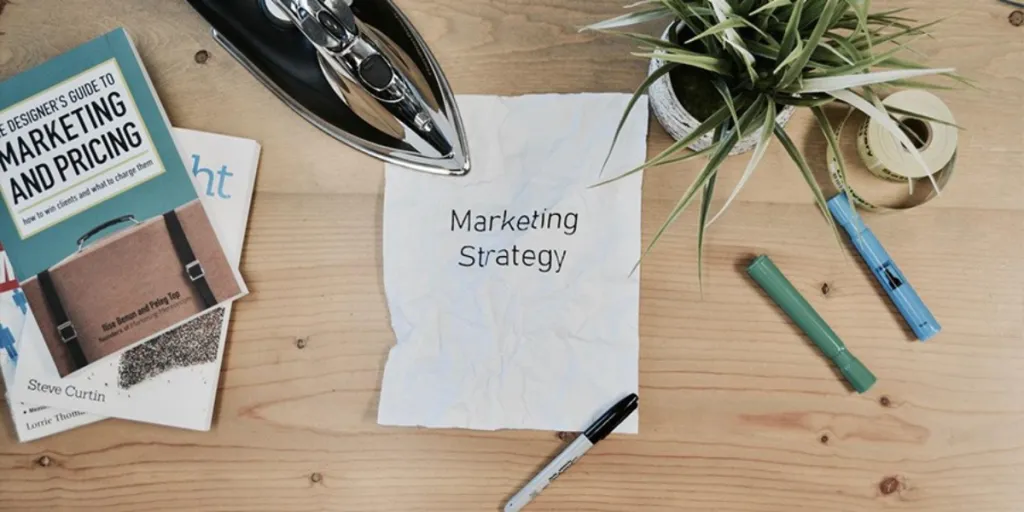Inbound marketing is all about providing information and solutions to your target audience’s problems. Having an effective inbound marketing content strategy helps to build loyal customers who re-purchase and can also translate into word-of-mouth recommendations for your business or your product.
In this article, we will discuss what inbound marketing is, how it works, and why you should use it to improve your strategy. We’ll also present some easy to follow steps to get started with inbounding marketing to grow your business.
Table of contents
What is inbound marketing content strategy
How does inbound marketing work
Inbound vs. outbound marketing
Who uses inbound marketing and why
Inbound marketing strategies to drive business growth
What is inbound marketing content strategy
A content strategy for inbound marketing focuses on creating valuable content that aligns with your business’s target audiences’ needs to help solve their problems and inspire long-term customer relationships.
The solutions your business provides can be presented in different ways, with the content matched to the specific platform in which it appears, but united by the aim to connect with potential buyers at all stages in the buying cycle.
Common types of inbound marketing content strategies include;
- Blog posts
- E-Books & white papers
- Videos
- Infographics
- Webinars
- News articles
- Social media
However, compelling content can come in many different shapes and sizes – so be creative when thinking about the many ways you can serve the needs of your audience.
How does inbound marketing work?
Inbound marketing is effective when your business produces high-quality content that your intended audience engages with. So, how does inbound marketing work?
- It’s not just about sales. It’s about creating a positive brand reputation and helping potential customers. It lets people know who you are as a business (or more about your products) and it provides helpful answers to their questions.
- It has the potential to
- generate repeat traffic to your website,
- spark word-out-mouth promotion of your brand, and
- generate leads to engage with.
- It reduces marketing expenses and provides a higher return on investment (ROI) over time.
- It helps create a credible and trustworthy brand and draws in quality leads from the most appropriate audience.
Creating an inbound marketing content strategy also provides a unique opportunity for brands to grow through customer engagement. Listening to customer conversations, answering questions, and receiving feedback helps businesses better understand how to make improvements to products and services.
Also note the leads gained through inbound marketing is where you focus your outbound marketing strategy. People who have already engaged with your brand are more likely to engage with outbound marketing strategies, and so targeting marketing to them can be more effective than reaching out to a broader audience through general ads.

Inbound vs. outbound marketing
Outbound marketing is a method of marketing that pushes messaging out to potential customers. It includes trade shows, seminar series, cold calling, email marketing, pop-up ads, billboards, etc. It can be relatively costly, and the ROI is much lower than inbound marketing.
Inbound marketing is a strategy where you create content that spreads brand awareness, allowing people to learn more about your business. For example, they might visit your website for information, which could drive interest in your products and potentially lead to a purchase.
While many outbound strategies take lots of time and effort and may still produce no leads, inbound strategies allow businesses to engage an audience that can more easily qualify as potential leads.
Overall, outbound marketing techniques are getting less and less effective over time for two reasons.
- The average digitally connected human is inundated with a minimum of 2,000 outbound marketing interruptions daily. As a result, consumers are figuring out more and more creative ways to block these messages, for example, ad-blocking browser extensions, caller ID, and email spam filtering.
- The cost of learning something new or shopping online is much lower than attending a seminar or flying to a trade show.
Rather than focusing on outbound marketing to people trying to block you out, you can focus on the benefits of inbound marketing, where you help yourself, and your business be visible to people already interested in your industry.

Who uses inbound marketing and why?
Inbound marketing tactics can be used by any business seeking to build a deeper, more dynamic relationship with their customers. So, everyone who can use inbound marketing should. Plus, around 85% of consumers conduct research online before making a purchase. Inbound marketing can meet customers where they’re at in the buyer’s journey and provide them with helpful resources that build trust.
It’s especially great for small businesses because it’s relatively inexpensive and creates a living library of branded content.
Inbound marketing strategies to drive business growth
Now that you know inbound marketing can significantly impact a marketing strategy and is a cheaper way to convert customers, how do you get started? Here are some tips and examples of inbound marketing that will help drive business growth.

1 Define your ideal customer profile
A great inbound marketing content strategy starts with your target audience. Who are they? What are they searching for? What problems do they have that your business can solve? Here is where you create your target persona.
Hint: If you already have a business Facebook page, you can review your page insights to see the demographics of people visiting your page. This can be a useful starting point when building your target persona and will often result in your first inbound leads.
Once you understand your audience, you can create content that will attract them specifically through content creation (blogs, videos, etc.) and social media.

2 Create persona-driven content
Creating quality content is the cornerstone of a successful inbound marketing strategy. Focus on content that appeals directly to your target audience to:
- Provide potential new leads with valuable information they’re seeking to convert them to customers
- Strengthen relationships with existing customers
- Stand out from competitors
What is quality content?
Quality content is content that helps the reader in some way. The more content intrigues, inspires, or helps readers, the more likely they will be converted into customers.
Here are some quick tips on creating appealing inbound content marketing:
- Writing an enticing headline
- Make content visual (include images, charts, graphics and even video)
- Write in-depth, data-driven articles
- Use storytelling in your content

3 Test headlines
Headlines are an essential aspect of creating content, as headlines often determine whether or not someone initially clicks on a link after searching. A good headline should contain the article keyword and grab the reader’s attention.
Here are some tips on creating good headlines:
- Ensure your keyword is in the title
- Capture attention by writing headlines that are unique, specific, provide something useful and give a sense of urgency
- Use numbers, like ‘5 Tips…’
- Use emotionally powerful words
- Headlines are also more likely to be clicked if they are negated – using words like ‘not’ rather than ‘always.’
The best way to determine the best titles for your business is to A/B test your headlines and see which ones get the most clicks.

4 Create pillar pages
A pillar page is a page on your website that covers all aspects of a topic that’s important to your audience in one place and links to the clusters of related content. Pillar pages create a more organized site structure that helps more pages on your site rank in Google and help people find information on your site more easily.
Pillar pages are longer than a typical blog post but aren’t as in-depth. They answer the broad questions about a particular topic with subsequent detail in related cluster content linked to the pillar page.
To create a pillar page, start thinking about the topics you want to rank for before worrying about specific keywords. Think about your audience’s top interests, challenges, and concerns and ensure the topic is broad enough to generate more related blog content but not so broad you can’t cover the topic in one pillar page.

5 Search Engine Optimization (SEO)
SEO, or search engine optimization, aims to improve page ranking to increase the likelihood of traffic from organic searches. So, SEO for inbound marketing means targeting keywords customers are already searching for and optimizing the pages on your site with these terms.
What is on-site SEO optimization?
On-site SEO refers to optimizing a page’s content and HTML source code. The ultimate goal is to make it as easy as possible for both search engines and users to:
- Understand what a web page is about
- Identify that page as relevant to a search (i.e. a particular keyword or set of keywords)
- Find that page useful and worthy of ranking well on a search engine results page (SERP).
But on-site SEO is about more than just keywords, several “keyword-agnostic” elements influence a page’s on-site optimization. These include things like:
- Link use on a page: How many links are there? Are they internal or external? Where do they point to?
- Page load speed
- Use of Schema.org structured data or other markup
- Page URL structure
- Mobile-friendliness
- Page metadata
While on-site SEO optimization is important, it’s no longer enough to simply attempt to rank for relevant keywords – the keywords need to lead to relevant content.

6 Guest blog posts
Use guest blog posting to build authority and a well-known name in your industry. Having an inbound marketing blog that relates to your company’s offerings on other related sites can also create positive backlinks and increase organic traffic. While backlinks and traffic are a benefit of guest posting, it shouldn’t be the only focus (it’s not an advertisement).
In discussing why guest blogging is the best inbound marketing strategy, Neil Patel provides an example of guest blogging success.
Jon Cooper built credibility as an SEO expert when he published “The Complete List of Link Building Tactics.” Jon embraced guest blogging, and a single guest post published on Moz generated nearly 400 visitors.

7 Active social media
Social media is one of the best inbound marketing tools available and will help you to connect with potential customers, drive traffic to your blog posts and increase public knowledge of your company. It also provides an opportunity to get to know your target audience better.
Not convinced you need to invest in social media? The Harris Poll, on behalf of Sprout Social, surveyed US consumers and business executives to understand how they use social media and the importance of social media marketing. Here are some of the stats they uncovered:
- 55% of consumers learn about new brands on social media (this becomes even more important as Gen Z gains more buying power)
- 68% of consumers see that social media enables them to interact with brands and companies
- 78% of consumers buy from a company after having a positive experience with them on social media
- 72% of companies use social media data to inform business decisions
But keep in mind, your brand doesn’t have to appear on every social media platform. It’s important to choose the channels your target market uses the most, consider where they:
- spend leisure time
- spend money
- look for information and advice
Once you determine the right inbound marketing channels, you can craft your messaging.
8 Work with influencers
Working with influencers often goes hand-in-hand with your social media strategy. Influencers have a larger following of fans who admire and trust them; therefore, they can be an effective way of promoting your business.
Partner with influencers who are popular with your target demographic and have them promote your company or product. This could be a promotion or endorsement on social media, or an influencer can write a blog post.
Turn visitors into leads
Once you’ve attracted people to your website, you want to turn them into leads. Here are some inbound marketing strategies to convert users/readers into customers;
- Sign-up forms
- Compelling calls to action (CTAs)
- Incentivizing signing up for a business newsletter
- Formulaic email campaign strategy
- PPC Remarketing

Formulaic email campaign strategy
Rather than sending mass emails to people who are just going to tune you out, send specific email marketing campaigns to people who have opted in. This increases the likelihood of interested customers opening the email and decreases the possibility of your IP address being blacklisted for spam.
Make sure to A/B test your inbound marketing campaign emails to determine which layouts and copy are most effective.

PPC remarketing
Ad remarketing allows you to target people who have visited your website previously with ads specifically tailored to them. On the surface, it looks like traditional advertising; however, this strategy uses browser cookies to target google ads to people who have previously visited your website.
Remarketing is more powerful than traditional ads because the people who are viewing the ads have already shown some interest in your business. It also allows you to customize ads to an individual user, which makes them more relevant and more likely to result in a conversion.
Delight current customers
You want to go above and beyond to delight your customers after they’ve purchased.
You can build automation into your inbound marketing strategy. This could include an abandoned cart message for potential customers, thank you messages, personalized follow-up emails, discount offers or requests for feedback after the purchase.
When you leave customers feeling delighted after their purchase, it increases the likelihood they will become promoters of your business or brand.
What’s next?
Once you’ve built up some content on your website, including pillar pages, you need to get it out there so your audience can find it. Of course, SEO can help, but some other things you can do to increase the effectiveness of your inbound marketing content strategy include social media, guest blog posts, and working with influencers.
You can also employ email marketing and PPC remarketing strategies to convert leads into customers. Also, don’t forget to delight existing customers to turn them into promoters of your business.




